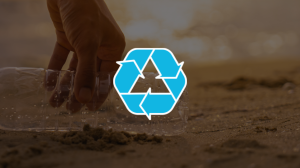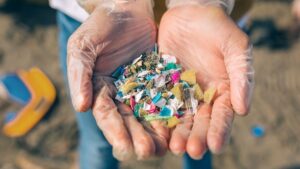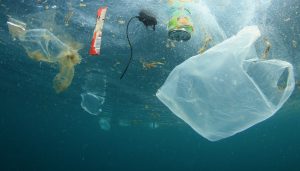Floating device created to clean up plastic waste in the Pacific Ocean isn’t doing its job
The Ocean Cleanup System 001 faces difficulties and requires repairs.
Full Article
Dive Brief:
- The Ocean Cleanup’s System 001 marine plastic collection prototype, known as “Wilson,” will be returning to port for repair after less than three months out in the Pacific Ocean.
- The 2,000-foot long boom is designed to capture marine plastic via 10-foot deep screens, with bulkheads for storage. An end piece has become detached from the larger unit, affecting sensors and satellite communication. The piece itself remains intact, with no loss of material reported, but requires onshore maintenance.
- Founder & CEO Boyan Slat announced the news in a Dec. 31 blog post, saying “setbacks like this are inevitable when pioneering new technology at a rapid pace,” and maintaining that “these teething troubles are solvable, and the cleanup of the Great Pacific Garbage Patch will be operational in 2019.”
Dive Insight:
The Ocean Cleanup, the product of 24-year-old Slat’s long-held aspirations, has become one of the flashier marine plastic projects in recent years; the U.N. previously heralded the concept as “revolutionary.” As of last fall, the project had raised nearly $35 million in funding since 2013. The Wilson prototype set sail from San Francisco Bay in September to great fanfare, reaching its destination by October — but even before the fracture, it hadn’t quite been living up to expectations.
The unit was reportedly losing plastic as of late November. Slat outlined a variety of steps that would be taken at the time, but critics have been quick to point to this as a sign of failure. Most recently, the prototype had collected approximately 2,000 kg of plastic debris and ghost fishing nets before it broke. Once fully operational, it aims to collect 1,000 kg per week.
As envisioned, The Ocean Cleanup’s goal is to eventually deploy numerous units throughout the ocean. But first, it will need to prove out this initial — and expensive — concept. Slat wrote that bringing Wilson back to shore will give the team an opportunity to address both problems at once, while also assessing “terabytes” of data along with the plastic collected. No timeline has been set on when Wilson might reenter the Pacific.
Regardless of what happens next, Slat’s efforts have undeniably raised awareness around the issue and have also contributed in small part to the scientific discussion. A study published in 2018, which the group played a key role in researching, found the “garbage patch” could be at least four times larger than previously expected.
As news continue to come out about the breadth of marine plastic pollution, a growing consensus is building to tackle the issue at its source. Circulate Capital, created via a partnership by Closed Loop Partners and the Ocean Conservancy, attracted $90 million in investments from major packaging companies last fall to work on areas of primary concern in Asian countries. While this and many other projects are promising, the vexing question of what to do with the plastic that has already entered waterways still remains. In Slat’s view, that either means waiting to inefficiently collect a fraction of it during beach clean-ups — or trying something new.



